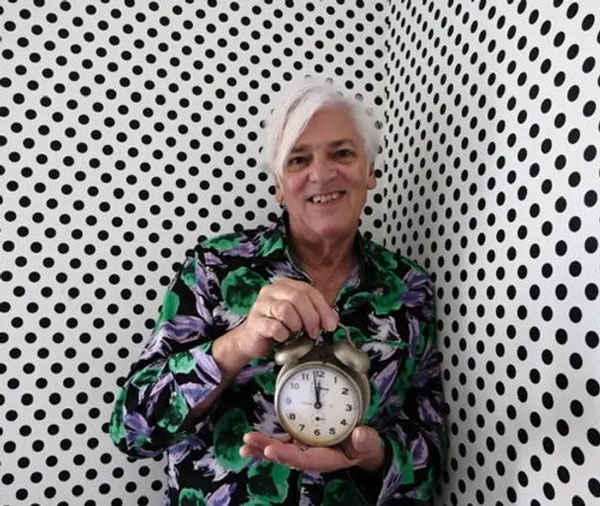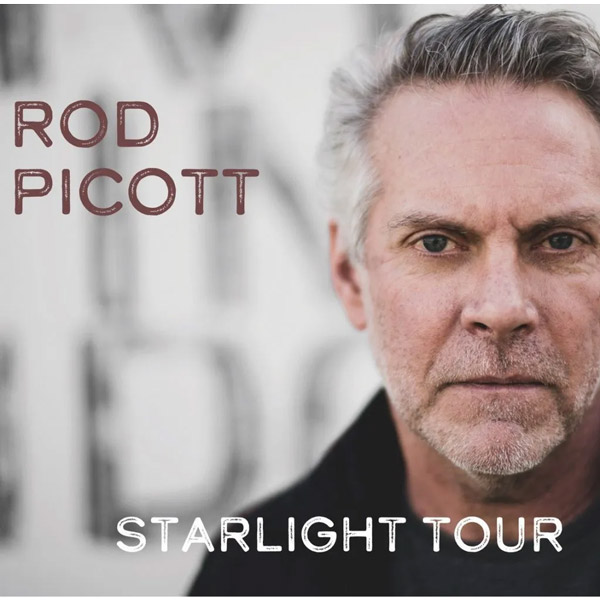By Spotlight Central, Photos by Love Imagery
originally published: 01/31/2019
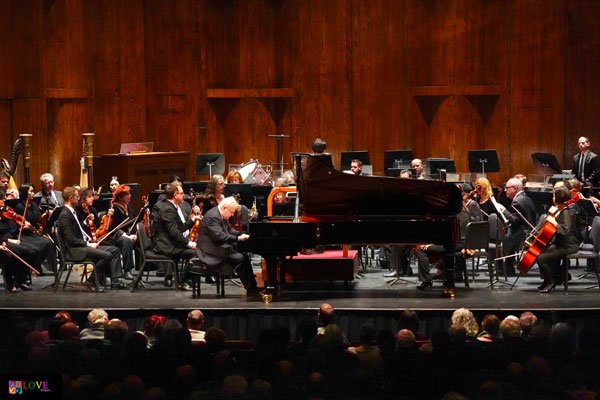
According to the New Jersey Symphony Orchestra, winter is a time for reflection and music which is inspired by great poetry, stories, and myths. As a result, this preeminent Garden State musical organization recently presented the 2019 edition of their annual Winter Festival entitled Music Speaks.
NJSO’s conductor and music director, Xian Zhang, described the current festival as “a highlight of my career” in that, within a three-week period from January 10 to January 27, 2019 she had the privilege of working with “three of the top living artists” — pianist Emanuel Ax, soprano Dawn Upshaw, and pianist Daniil Trifonov.
For the first in NJSO’s 2019 series of Winter Festival programs, Zhang and the orchestra presented a Music Speaks concert on Sunday, January 13, 2019 at the State Theatre in New Brunswick, NJ featuring the world-renowned pianist, Emanuel Ax.
Emanuel Ax was born in Poland, but moved with his family to Winnipeg, Canada, while still a young boy. His musical studies at The Juilliard School in New York City were supported by the Boys Clubs of America, and he subsequently won the coveted Young Concert Artists Award.
Ax made his New York City performing debut in the Young Concert Artists Series and captured public attention in 1974 when he won the first Arthur Rubenstein International Piano Competition in Tel Aviv, Israel. He followed that up in 1979 by winning the Avery Fisher Prize for excellence and outstanding achievement in music.
A Sony Classical recording artist since 1987, Ax recently released a recording of Mendelsshon trios with cellist Yo-Yo Ma and violinist Itzhak Perlman. Deutsche Grammophon distributed a recording of sonatas by Fauré and Strauss with Ax and Perlman, and Ax has additionally created a series of Grammy-winning recordings of Beethoven and Brahms sonatas for piano and cello with Ma. Moreover, Ax has received Grammy awards for his recordings of several Haydn piano sonatas.
Currently touring such European cities as Munich, Amsterdam, Berlin, Rome, Vienna, and London, Ax also appears this season in the United States with orchestras in cities including Los Angeles, San Francisco, Chicago, Cleveland, Philadelphia, and New York.
Inside New Brunswick, NJ’s historic State Theatre, this afternoon’s packed house begins to applaud as the NJSO’s concertmaster, violinist Eric Wyrick, makes his way onto the stage and begins to tune the orchestra.
Conductor Xian Zhang and pianist Emanuel Ax also take the stage where they shake hands with Wyrick and each other before taking their respective places on the podium and behind the Steinway grand to perform this afternoon’s first selection, Mozart’s Piano Concerto №22 in E-flat.
In the Piano Concerto №22 — a piece which features a flute, two clarinets, two bassoons, two French horns, two trumpets, and timpani drums, along with strings and solo piano — Mozart establishes the woodwind section as the principal orchestral force of the work. Opting for the sweeter sound of clarinets rather than oboes, the woodwinds convincingly interface with the sound of the piano solo and nearly appear to become soloists themselves as they perform featured passages in all three movements.
Opening with the “Allegro,” the talented musicians of the NJSO introduce a large number of entrancing melodies during the orchestral exposition so that by the time Ax’s solo piano appears, his theme has half a dozen tuneful competitors.
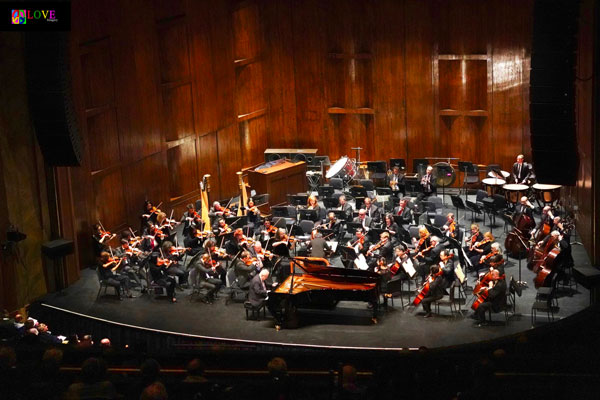
The strings lilt with majestic runs supported by the brass and low strings. The woodwinds float above, running in sync, until Ax begins to trill on his piano and then his hands lightly and expertly roll with expressive runs.
Zhang carefully watches Ax as she conducts the orchestra and the NJSO musicians watch Zhang as she delicately expresses her musical wishes until the point arrives where the entire orchestra is featured and she entices all of the string, wind, and percussion players to perform with increased volume and intensity.
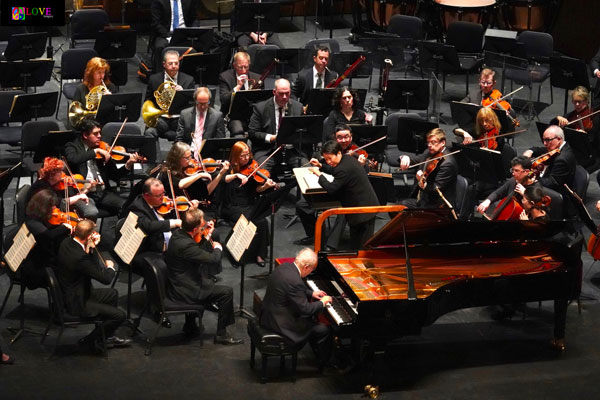
Next up is the “Andante,” a slower and more mournful movement which features Ax’s simple and somber piano part containing variations on a dark C-minor theme. Two episodes for the winds — in E-flat major and C major — help to relieve the tension, and in the second episode, flute and bassoon share an intimate duet which appears to channel Mozart’s The Magic Flute. The coda is delicate yet ominous, and conducted and played with emotion by Zhang, Ax, and the NJSO musicians.
For the concerto’s final movement, “Rondo: Allegro,” trumpets and timpani echo the flavor of the initial first movement. Midway through, a miniature woodwind serenade featuring clarinets and bassoons takes shape. With this shift in instrumentation, Mozart both manages to recall the poignant tragedy of the prior slow movement and raise the finale to an even higher level of expression.
As they perform, Zhang and NJSO impress with a regal interpretation featuring calling horns and nuanced dynamics, before Ax shines in an impressive cadenza of his own creation which features majestic playing, amazing runs up and down the piano, and a triumphant coda which elicits cheers and applause from the entire audience!
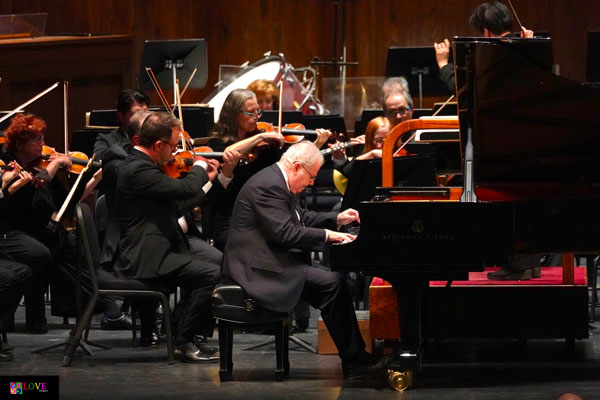
As the crowd continues to react, Zhang shakes hands with orchestra members and claps for them while still grasping her baton in her hand. She has the wind players rise, and follows up by spotlighting the featured string musicians before asking the entire orchestra to stand. The audience calls their “Bravos!” for both Ax and Zhang as the gifted pianist and conductor return for one last hurrah, bowing hand-in-hand, obviously pleased with the crowd’s enthusiastic response to their performance!
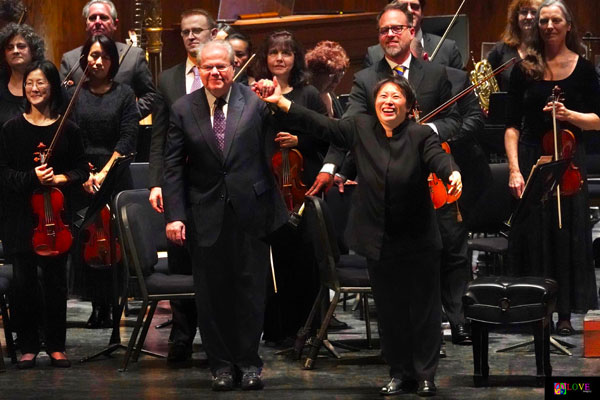
During a brief intermission, we chat with several members of the audience who share their opinions of the afternoon’s presentation thus far.
Comments Barbara from Highland Park, “This is an outstanding performance! We’ve been coming to the NJSO for 15 years, and they are a very fine orchestra. We used to have season tickets to the NY Philharmonic, but now we just come to the NJSO — they always manage to bring in such wonderful soloists!”
Continuing, “Emanuel Ax was extraordinary, and Xian Zhang is always fabulous,” Barbara concludes by stating, “Their music moves you — it so beautiful! It’s just a delight to be here!”
Eleanor from Monroe Twp. concurs adding, “I’m really enjoying this concert,” before confessing, “All through the show, I’ve been thinking to myself that the NJSO should appear on both of my favorite classical music radio stations — New Jersey’s WWFM 91.1 and New York’s WQXR 105.9!”
Following intermission, the orchestra re-tunes as the lights dim and the audience quiets in preparation for Act II which features Zhang and the NJSO’s performance of Tchaikovsky’s Manfred Symphony after Byron.
An example of program music — where the playing of musical instruments is designed to suggest images and/or convey a story — Tchaikovsky’s Manfred Symphony tells the tale of an 1817 Lord Byron dramatic poem in a musical way. Tortured by memories of his incestuous love for his sister, Manfred lives in deep despair inside a lonely Alpine castle. During a visit to the Underworld, he sees a vision of his sister. Incapable of remorse, demons summon him to eternal damnation. Although Manfred defies the demons — denying them his soul as they vanish — he nonetheless dies in the process.
In addition to the traditional woodwind, brass, and string instruments typically employed in orchestras during the Romantic period, Tchaikovksy features several more unusual choices in Manfred including two clarinets in the key of A (vs. B-flat), a special type of gong known as a tam-tam, a set of chimes, an organ, and even a set of two full-sized harps!
In the first movement,“Lento legubre,” the orchestra introduces the story of Manfred, who finds himself wandering in the Alps. Tormented by hopeless longings, he plunges himself into the occult sciences where he learns how to command the powers of darkness, but even they cannot grant him the gift of forgetfulness which he so desperately desires. The memory of his incestuous love for his sister consumes his heart, and there is no end to his despair.
To bring this dark, powerful, and foreboding story to life, Zhang leads the mighty NJSO on this slow and mournful movement in a broad and demanding way.
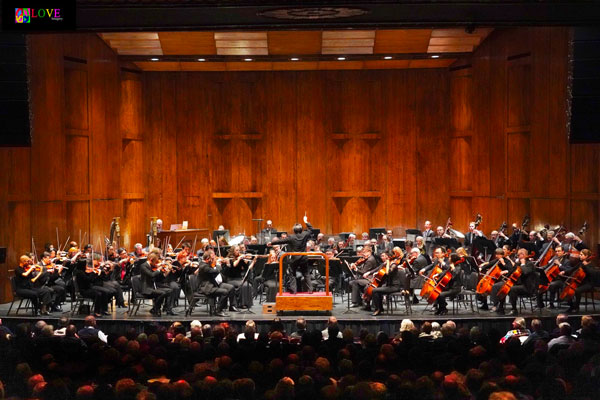
The second movement, “Vivace con spirit,” has an Alpine fairy appearing before Manfred in a rainbow from the spray of a waterfall. Lively, but at times tumultuous, the NJSO musicians expertly perform this segment of the work which rapidly carries itself to a dramatic conclusion.
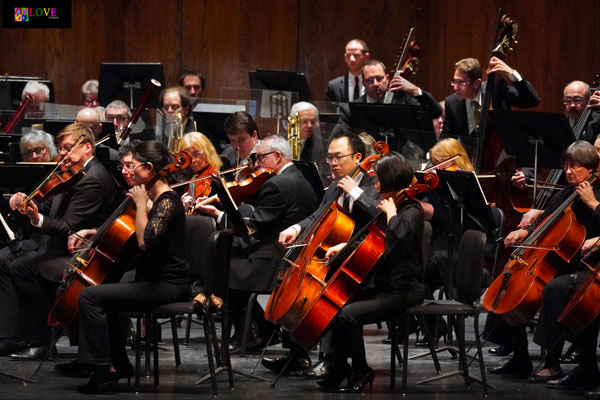
“Andante con moto” is the third movement, during which Tchaikovsky provides a musical picture of the free life of the simple mountain folk who inhabit the Alps. Featuring a stunning string line, the “Andante” even elicits a chuckle from audience members at the end when the violins use the technique of pizzicato to happily pluck on their strings!
Manfred’s final movement, the “Allegro con fuoco,” conjures up a subterranean palace, where an infernal orgy takes place. Manfred appears in the middle of the wild revelry and evokes an apparition of his sister.
Opening with soft, beautiful, and flowing themes, the music soon turns dark and ominous. The orchestra plays as if it is one with Zhang, her vision for the work drawing the music out of the performers and their instruments as they connect to interpret the powerful emotion of Tchaikovsky’s score.
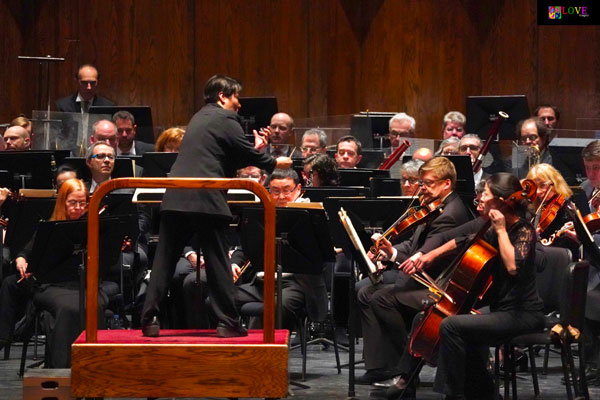
Making the music speak to the audience — telling an entire narrative without words — Zhang is both animated and demanding, conducting with her whole being, bringing this dramatic piece to life and eliciting great applause from the packed house!
As audience members continue to clap, Zhang bows to the orchestra and then recognizes various players before inviting the entire wind, percussion, and string sections to stand. Smiling broadly and shaking hands, she exits the stage before continued audience applause brings her back and she invites all of the piece’s players to rise a second time!
As audience members make their way out of the auditorium, we chat with several music lovers here today who share their opinions about this afternoon’s performance.
States Sherri from Edison, “Tchaikovsky’s Manfred Symphony is one of my favorite pieces,” before noting, “and Xian Zhang is such a dynamic person and so skilled at leading this orchestra.”
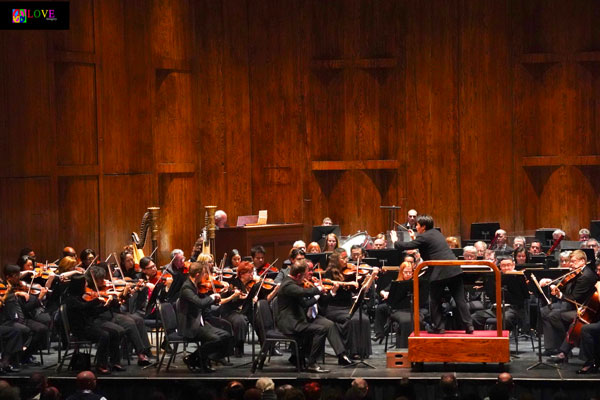
“The pairing of the Mozart and Tchaikovsky pieces today makes sense,” continues Sherri, “when you think about the fact that, although they lived during different periods, both Mozart and Tchaikovsky were writing these works at about the same point in their lives.” Explaining that “each composer was about 80% through his writing career,” she concludes by suggesting, “so everything each of these masters had learned up to that point was available for their use within these pieces.”
Comments Rhonda from Monroe Twp., “This program was marvelous — it was really dynamic! And even though they weren’t completely familiar to me, I liked the choice of both pieces,” before noting, “And the addition of the organ and the two harps in Manfred was a real surprise!”
Jules from Monroe Twp. calls today’s concert, “Absolutely fantastic!” and the NJSO “one of the best orchestras I’ve ever seen.” A former trumpet player, Jules remarks, “The brass section was fabulous, but I loved Emanuel Ax, too — his hands were like icicles, he’s so precise!”
Lastly, we chat with Sue from Highland Park who concurs stating, “I think the New Jersey Symphony Orchestra is just great!” Continuing, “We need to bring concerts like this to younger audiences,” Sue concludes by declaring, “We need music programs like this to be around for the next generation!”
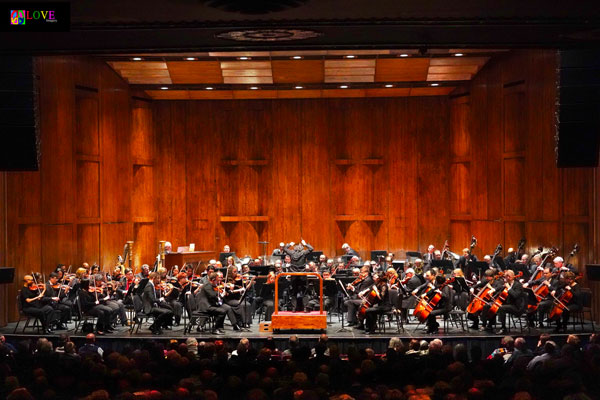
To learn more about the New Jersey Symphony Orchestra, please go to njsymphony.org. To find out more about upcoming programs by the New Jersey Symphony Orchestra at New Brunswick’s’ State Theatre — including Debussy Masterworks on March 10, and Mary Poppins in Concert with the NJSO on April 4 — please click on njsymphony.org or stnj.org.
Photos by Love ImagerySpotlight Central. Your source for Jersey entertainment news and reviews
Love Imagery Fine Art Photography. all you need. peace/love/flower/power
FEATURED EVENTS
Narrow results by date, categories, or region of New Jersey.

Trombone Shorty & Orleans Avenue
Thursday, November 21, 2024 @ 7:30pm
State Theatre New Jersey
15 Livingston Avenue, New Brunswick, NJ 08901
category: music
View event page for full information

Randall Goosby Returns: Renaissance Quartet
Thursday, November 21, 2024 @ 7:30pm
McCarter Theatre Center (Matthews Theater)
91 University Place, Princeton, NJ 08540
category: music
View event page for full information

Marshall Crenshaw - Up Close & Personal
Thursday, November 21, 2024 @ 7:30pm
Lizzie Rose Music Room
217 E. Main Street, Tuckerton, NJ 08087
category: music
View event page for full information
More events
Event Listings are available for $10 and included with our banner ad packages
EVENT PREVIEWS

Renaissance Quartet Brings Bold Innovation and Classical Mastery to McCarter Theatre on Thursday
(PRINCETON, NJ) -- Prepare to be captivated by the Renaissance Quartet, featuring violinists Randall Goosby and Jeremiah Blacklow, violist Jameel Martin, and cellist Daniel Hass. Graduates of the Juilliard School and mentored by the legendary Itzhak Perlman, the Quartet brings a unique blend of classical mastery and innovative flair to McCarter Theatre on Thursday, November 21, 2024 at 7:30pm. Known for reimagining chamber music traditions, this New York based ensemble combines technical excellence with a bold, forward-thinking approach that appeals to a diverse audience.
UPCOMING EVENTS
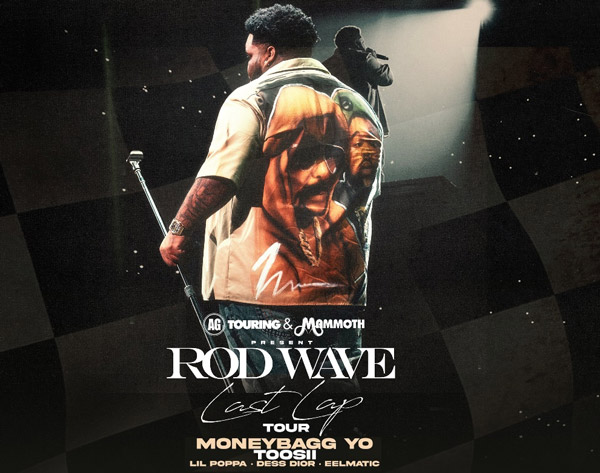
Rod Wave - Last Lap Tour comes to Prudential Center in December
(NEWARK, NJ) -- This Fall, AG Touring and Mammoth, Inc. proudly present the Rod Wave - Last Lap Tour. This large-scale multi-city outing will feature Rod Wave headlining 36 of North America's top arenas coast-to-coast. The tour will kick off on October 19 at Desert Diamond Arena in Phoenix, AZ visiting major markets across the country, including Newark’s Prudential Center on Tuesday, December 3, 2024 with special guests Moneybagg Yo, Toosii, Lil Poppa, Dess Dior and Eelmatic.


















